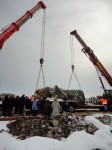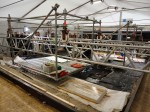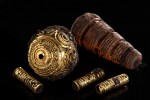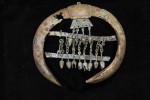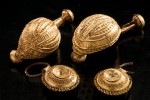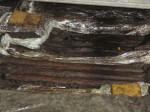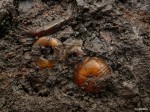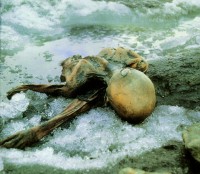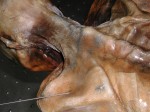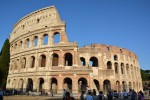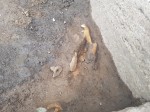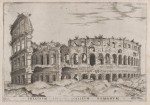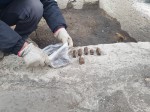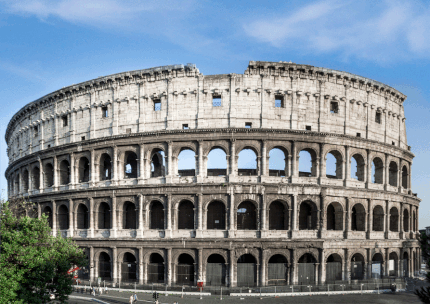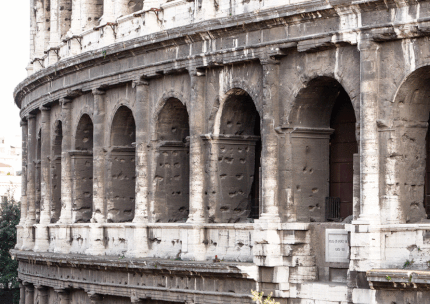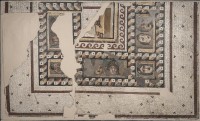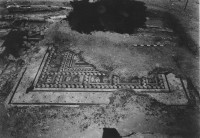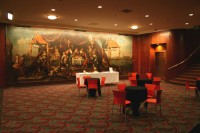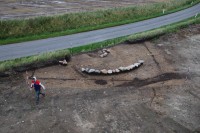 Danish archaeologist Bjarne Henning Nielsen, curator at the Vesthimmerlands Museum in North Jutland, has an entirely speculative but rather nifty idea that a tomb he has been exploring since 2009 may have belonged to the Viking chief Ulv Galiciefarer. A Danish jarl (earl) of high rank with close connections to the royal family, Ulv earned his moniker with a successful series of raids on Galicia, Spain, in the first half of the 11th century. His exploits are recounted in the Knytlinga Saga, an Icelandic saga of the kings of Denmark written around 1250, and his issue would rule Denmark. His granddaughter Boedil was queen consort to King Eric I of Denmark (r. 1095–1103). Their son and heir Canute Lavard was murdered by his cousin in a classic Game of Thrones intrigue. Only days after the assassination, Canute’s son Valdemar was born. He would go on to rule Denmark as Valdemar the Great (r. 1157-1182).
Danish archaeologist Bjarne Henning Nielsen, curator at the Vesthimmerlands Museum in North Jutland, has an entirely speculative but rather nifty idea that a tomb he has been exploring since 2009 may have belonged to the Viking chief Ulv Galiciefarer. A Danish jarl (earl) of high rank with close connections to the royal family, Ulv earned his moniker with a successful series of raids on Galicia, Spain, in the first half of the 11th century. His exploits are recounted in the Knytlinga Saga, an Icelandic saga of the kings of Denmark written around 1250, and his issue would rule Denmark. His granddaughter Boedil was queen consort to King Eric I of Denmark (r. 1095–1103). Their son and heir Canute Lavard was murdered by his cousin in a classic Game of Thrones intrigue. Only days after the assassination, Canute’s son Valdemar was born. He would go on to rule Denmark as Valdemar the Great (r. 1157-1182).
The tomb was discovered near Naesby in Jutland in 1951 during highway construction. An excavation unearthed a broken sword engraved on the blade near the handle. The inscription is worn and hard to read, but may have been INNOMED, meaning “In the name of” or “In His name”. The grave also contained equestrian fittings and a beautiful, rare pair of silver-plated stirrups made in Central Europe. The excavation of the tomb, dubbed the rider’s grave due to the horse-related artifacts, was a rushed affair. The grave was reburied and neglected until the Vesthimmerlands Museum began to re-excavate the site in 2009.
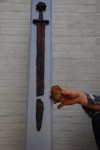 Excavating the grave and the wider site, the museum’s archaeological team discovered a 10 cm fragment of the broken sword found in 1951, plus 24 more graves from the Viking era. The rider’s grave was just the most opulent and prominent of the compound. A small semicircle of stones, the remains of a larger Viking-era rock formation, still marked what had once been a grave mound. The stone circle area is surrounded by dark lines in the soil, traces of long-decayed wood that once bounded the grave. At first Nielsen thought these lines were what was left of a palisade or paddock, like the 10th century death house built over the grave of a Danish noble couple. A survey of the lines revealed that the structure over the rider’s grave would have been more than 100 square meters (1076 square feet). That’s way, way bigger than your usual death house.
Excavating the grave and the wider site, the museum’s archaeological team discovered a 10 cm fragment of the broken sword found in 1951, plus 24 more graves from the Viking era. The rider’s grave was just the most opulent and prominent of the compound. A small semicircle of stones, the remains of a larger Viking-era rock formation, still marked what had once been a grave mound. The stone circle area is surrounded by dark lines in the soil, traces of long-decayed wood that once bounded the grave. At first Nielsen thought these lines were what was left of a palisade or paddock, like the 10th century death house built over the grave of a Danish noble couple. A survey of the lines revealed that the structure over the rider’s grave would have been more than 100 square meters (1076 square feet). That’s way, way bigger than your usual death house.
Nielsen remembered seeing a similar structure years earlier when he was working on a the grave of a Viking noblewoman outside the city of Randers in eastern Jutland. South of that site, in Horning, another noblewoman’s grave had been found in the early 1960s which had first been a traditional burial mound, only for the mound to be demolished at a later date a wooden church built over the grave. Long after her death and burial, somebody wanted a more elaborate memorial to the deceased constructed on the site.
It suddenly occurred to Bjarne Henning Nielsen like the proverbial eureka in the bathtub that the rider’s grave could have received the same treatment. The mound is gone, only the stone semicircle testifying to its existence. Nielsen thinks the mound was deliberately demolished to make way for a chapel. Death houses were reserved for nobles of very high rank, but architecturally speaking they were fairly rudimentary. A full chapel would indicate an extremely important personage was buried on the spot.
 The reason Ulv Galiciefarer popped into Nielsen’s head as a candidate is that the Naesby area is believed to have been part Valdemar the Great’s ancestral heritage, ie, his personal freehold, not Crown property. Contemporary sources note Valdemar donated a large parcel of land in his freehold less than a mile from Naesby to Cistercian monks. He could certainly have ordered the construction of a chapel over the tomb of his famous great-great-grandfather. It would be a display of piety as well as a way to underscore a nationally important figure in his lineage.
The reason Ulv Galiciefarer popped into Nielsen’s head as a candidate is that the Naesby area is believed to have been part Valdemar the Great’s ancestral heritage, ie, his personal freehold, not Crown property. Contemporary sources note Valdemar donated a large parcel of land in his freehold less than a mile from Naesby to Cistercian monks. He could certainly have ordered the construction of a chapel over the tomb of his famous great-great-grandfather. It would be a display of piety as well as a way to underscore a nationally important figure in his lineage.
“It is private property he inherited from his father’s side, and Galiciefarer is part of the lineage,” said Nielsen.
“There is of course not a note in the grave saying ‘Here lies Ulv’, but the time and place fit and the burial is consistent with that of someone the king would want to honour.”
Nielsen conceded that his theory may be nothing more than a hopeful guess.
“All we can do today is speculate, but someone wanted to honour the great hero who lies there, whose name we unfortunately may never know,” he said.
There’s very little to go on here. The Galiciefarer hypothesis If the grave was the final resting place of a jarl, Ulv or anyone else, it would be the first jarl’s tomb known. Archaeologists haven’t had a template of a jarl’s tomb to use for identification, so the possibility, however remote, that this grave could have been Ulv Galiciefarer’s dangles the tempting prospect of figuring out yarl-specific funerary traditions that could then illuminate future excavations.
